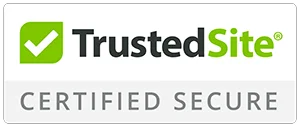Every year, immigrants check the status of their applications or request urgent case reviews. Knowing how to contact U.S. immigration services correctly can save you time and frustration. Unfortunately, many applicants face long wait times, unanswered emails, and communication barriers that delay their immigration process.
Calling USCIS feels like the default option for many. However, this often results in extended hold times and unhelpful automated responses. Fortunately, there are alternative ways to get a faster and more reliable response. These methods range from digital self-service tools to congressional assistance. Understanding immigration contact points is crucial, as different agencies handle different cases. The U.S. Citizenship and Immigration Services (USCIS) manages most visa and green card applications. While the State Department oversees consular processing for those outside the U.S.
Also, the Department of Homeland Security (DHS) Ombudsman provides an escalation channel for unresolved USCIS cases. Using the right tools and strategies can significantly improve your chances of getting a timely response. At Queens Immigration Attorney, we provide a professional and structured approach to getting the answers you need.
Key Statistics:
- More than 90% of case inquiries can be resolved using USCIS’s online self-service tools.
- The average call wait time for USCIS live assistance exceeds 40 minutes, with peak hours leading to even longer delays.
- USCIS processes over 8 million applications yearly, contributing to extensive case backlogs.
- Some USCIS field offices take over 12 months to process specific requests, making follow-ups crucial.
- Over 500,000 appointment requests are made annually for in-person USCIS visits, often due to unresolved phone inquiries.
- Only a small fraction of expedited requests are approved each year, as USCIS applies strict criteria for case prioritization.
- The USCIS e-Request system resolves thousands of missing document issues monthly.
Tips on How to Contact U.S. Immigration to Correct, Update, or Replace Your Documents
Errors, missing documents, and outdated information can create unnecessary delays in the immigration process. Whether you need to correct a typographical mistake, update biographic details, or replace a lost document. Knowing how to contact U.S. immigration helps with smooth communication. Without the proper approach, you may face longer processing times or even the need to submit a new application.
Correcting Errors on USCIS Documents
Mistakes on USCIS-issued documents can lead to issues with work authorization, travel, and legal status verification. If USCIS made a typographical or clerical error, they will generally correct it without charge.
Eligible Corrections: The USCIS allows corrections for;
- Misspelled names or incorrect birthdates due to a USCIS data entry mistake.
- Errors on Employment Authorization Documents (EADs), Green Cards, or Form I-94 records.
- Incorrect immigration status details that were mistakenly printed on an official USCIS document.
How to Request a Correction?
- Submit an online case inquiry through the USCIS e-Request system.
- Call the USCIS Contact Center to report the error.
- Mail the incorrect document to USCIS with a correction request letter explaining the issue and attaching any supporting evidence.
If the error was not USCIS’s fault, you may need to submit a new application and pay a filing fee.
Updating Biographic Information
Immigrants may need to update their USCIS records due to name changes or changes in nationality. Keeping these records accurate prevents delays in future applications and shows compliance with U.S. immigration laws.
Common Biographic Updates: Applicants may request updates for;
- Name changes due to marriage, divorce, or legal court orders.
- Updates to country of citizenship due to naturalization in another country.
How to Request a Biographic Update?
- File Form I-90 for Green Card updates.
- Submit Form I-765 to update employment authorization details.
- Provide supporting legal documents, such as a marriage certificate or a court order, along with the correction request.
For name changes during an ongoing USCIS application, updates may also be made during interviews or in response to an RFE.
Replacing Lost, Stolen, or Damaged Immigration Documents
Losing an immigration document can be stressful. Especially if it affects your ability to work, travel, or prove your legal status. Fortunately, USCIS allows applicants to request replacements, but the process varies by document type.
How to Replace Immigration Documents?
- Green Card: File Form I-90 online or by mail.
- Employment Authorization Document (EAD): Submit Form I-765 requesting a new EAD.
- Form I-94 (Arrival/Departure Record): Use Form I-102 to request a replacement.
- Naturalization or Citizenship Certificate: Submit Form N-565 for a new certificate.
Preventing Identity Fraud
If your immigration document was lost or stolen, USCIS recommends filing a police report. Include a copy of your replacement application. This helps protect against identity theft and fraudulent use of your document.
Expedited Processing for Urgent Replacements
Many applicants need guidance on how to contact U.S. immigration when they need to expedite their cases’ processing. USCIS may expedite document replacements in cases of urgent travel, employment, or legal issues. However, approval is discretionary and requires strong evidence of hardship.
Situations That Qualify for Expedited Processing:
- Employment or travel emergencies where a missing document causes job loss or prevents reentry into the U.S.
- Errors affecting work authorization, such as an incorrect expiration date on an EAD.
- Severe financial loss due to delays in receiving immigration benefits.
How to Request Expedited Processing?
- Submit a USCIS e-Request with an explanation of urgency.
- Call USCIS and request an expedited appointment.
- Schedule an emergency in-person visit to a USCIS field office.
If you are facing immigration issues, an experienced immigration attorney can provide guidance for a faster resolution.
How to Contact U.S. Immigration Without Calling?
USCIS receives millions of case inquiries each year. This leads to significant delays in responding to phone calls. Many applicants spend hours on hold only to receive generic responses or be redirected to online tools. While calling remains an option, it is often the slowest and least efficient way to contact U.S. immigration authorities.
Digital Self-Service Tools
USCIS has developed several online resources that provide immediate answers to common immigration questions. These tools allow applicants to check their case status, receive automated updates, and submit service requests. All without needing to call a representative.
Key USCIS Online Tools
- Check Case Status: Applicants can enter their receipt number to track case progress.
- USCIS Processing Times: This tool estimates wait times for specific application types.
- USCIS e-Request: Applicants can submit case inquiries for missing notices, delayed documents, and other service issues.
The USCIS virtual assistant, Emma, answers general immigration questions in English and Spanish. However, applicants may be redirected to live chat support if Emma cannot resolve an issue. These digital self-service tools eliminate unnecessary calls and help applicants obtain information faster.
Case-Specific Email Addresses
For certain immigration cases, USCIS provides direct email contacts for applicants who cannot use the e-Request system. These case-specific emails allow faster responses for select visa categories and humanitarian applications.
Who Can Use Case-Specific Email Contacts?
- Refugee applicants.
- T visa, U visa, or VAWA applicants.
- Employment-based applicants: Some employer-sponsored cases may qualify for case-specific email inquiries.
Liaison Assistance
Applicants experiencing unresolved issues with USCIS may seek help from the USCIS Ombudsman. However, many applicants do not know how to contact U.S. immigration for liaison assistance. This independent office assists individuals who have followed proper procedures but continue facing significant delays.
When to Request Ombudsman Assistance
- Cases stuck beyond posted processing times with no response from USCIS.
- Approved petitions that have not been forwarded to the National Visa Center (NVC).
- USCIS errors that led to application rejections or delays.
To seek assistance, applicants must submit DHS Form 7001 online, providing a summary of their USCIS issue and supporting documentation. The Ombudsman does not provide legal representation but can escalate unresolved cases to USCIS leadership.
Congressional Inquiries
When all other communication methods fail, applicants may request congressional assistance to expedite their case. Many U.S. congressional offices have dedicated staff to assist constituents with immigration concerns.
Who Qualifies for Congressional Assistance?
- Applicants who face extreme delays in processing.
- Urgent humanitarian cases requiring immediate attention.
- Individuals with employment authorization issues that risk job loss.
To begin the process, applicants should contact their local congressional representative and request case assistance. The representative’s office typically requires a privacy release form before contacting USCIS on the applicant’s behalf.
We’re busting the top 7 myths about U.S. immigration. Check out the truth here!
How to Contact U.S. Immigration from Outside the United States?
Applicants outside the country rely on U.S. embassies, consulates, the National Visa Center (NVC), and limited USCIS international field offices. The communication process can be complex, and delays are common.
Contact Methods for Overseas Applicants
International applicants often wonder how to contact U.S. immigration. They must contact U.S. immigration authorities through specific channels based on their immigration status, case type, and processing stage.
National Visa Center (NVC)
After USCIS approves an immigrant petition, NVC collects supporting documents and fees and schedules visa interviews at U.S. embassies or consulates.
- Primary Contact Method: Applicants can reach NVC via the Public Inquiry Form.
- Who Should Contact NVC? Individuals whose petitions have been approved by USCIS but have not yet been scheduled for an embassy interview.
- Common Reasons to Contact NVC: Checking case status and priority dates, submitting supporting documents for visa applications, or updating contact information or legal representation.
If a visa is immediately available, NVC moves cases forward. However, if a case is not yet current, applicants must monitor the Visa Bulletin for availability updates.
U.S. Consulates and Embassies
Once NVC schedules an interview, U.S. consulates and embassies take over case processing. These offices issue visas, conduct interviews, and handle document-related concerns.
- Where to Find Contact Information: Each embassy has its website, accessible via the U.S. State Department’s site.
- Who Should Contact the Embassy? Individuals whose cases have already been scheduled for an interview or those dealing with visa-related emergencies.
- Common Reasons to Contact a U.S. Embassy: Reissuing expired visas, requesting interview rescheduling, or seeking emergency travel authorization.
Depending on the situation, applicants with expired visas may need to submit a new application and pay additional processing fees.
USCIS International Field Offices
USCIS previously operated several international field offices but has closed most of them in recent years. Limited USCIS offices still provide immigration-related services abroad, but their jurisdiction is narrow.
- Who Can Use These Offices? Some applicants filing refugee-related petitions or special immigrant cases may be eligible for assistance.
- Alternative Contact: If USCIS does not have a field office in your country, direct all inquiries to the main USCIS Contact Center.
Knowing how to contact U.S. immigration authorities outside the U.S. can be challenging. However, understanding the right channels simplifies the process.
Get the Right Help When Contacting U.S. Immigration
Reaching out to U.S. immigration authorities doesn’t have to be a frustrating experience. The key to avoiding stress is knowing how to contact U.S. immigration using the most effective strategies. This includes leveraging online tools, congressional assistance, and professional legal help. Whether you’re trying to track your case, expedite a decision, or escalate an issue, a well-planned approach is essential. At Queens Immigration Attorney, we understand the complexities involved and advocate for your case effectively. Now is the time to take action. Contact a dedicated attorney by booking a free consultation.





